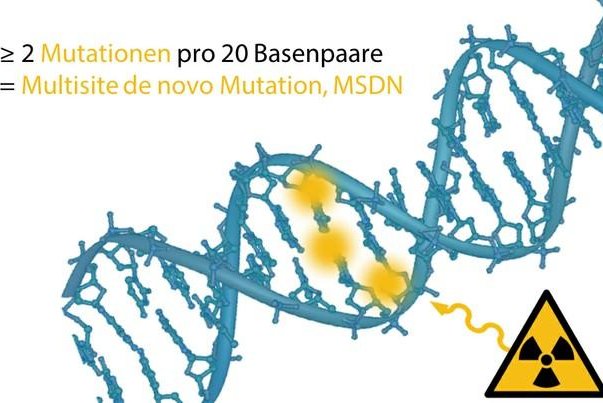Multisite de novo mutations involve two or more adjacent DNA defects within a line of 20 base pairs. Photo by Institute of Genomic Statistics and Bioinformatics/UKB
Oct. 5 (UPI) -- Scientists have identified a pattern of genetic mutation among the children of soldiers exposed to radar.
Prior to the 1990s, most radar systems were poorly insulated. Those operating and working in close proximity to the systems were regularly exposed to the unconfined radiation.
Today, the radiation emitted by radar systems is well-contained and soldiers are better protected. However, some soldiers exposed to radiation in the 1970s and 1980s -- so-called "radar soldiers" -- have experienced health problems after leaving the service.
New research suggests the effects of radiation also explain genetic mutations among the children of radar soldiers. Families affected by radiation exposure have raised concerns about radiation's generation impacts, but until now, the science was inconclusive.
"Through the latest methods of high-throughput sequencing, the complete genomes of parents and their children can now be studied within a short time," Manuel Holtgrewe, researcher at the Berlin Institute of Health, said in a news release. "This allows us to determine the mutation rates after radiation exposure much more accurately than before."
For their genetic survey, scientists recruited twelve radar soldier families. Researchers sequenced the genomes of 18 children and their parents.
Scientists compared the rates of "multisite de novo" mutations, MSDN, in the genomes of radar solider offspring with those of a control population -- children with parents unexposed to radiation. Mice studies have previously confirmed a link between radiation exposure and multisite de novo mutations.
Researchers identified a higher rate of MSDN among radar soldier offspring. The survey revealed significant chromosomal alterations in the genomes of two children.
"The results of our pilot study suggest that an accumulation of certain genotype damage by radiation can basically be demonstrated in the next generation," said Peter Krawitz, researcher from the Institute for Genomic Statistics and Bioinformatics at the University Hospital Bonn.
The findings were published this week in the journal Scientific Reports. Authors of the new study hope a larger followup study will provide a clearer picture of the extent of genotype damage caused by radiation.















